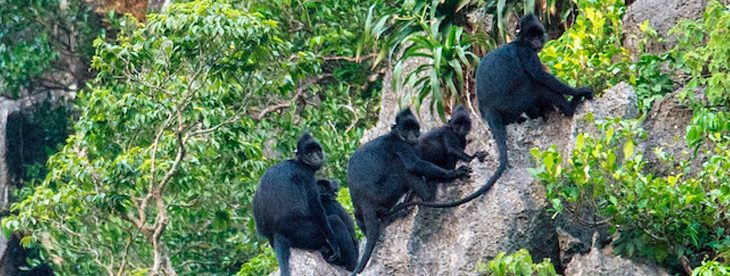REDD can describe the processes of reducing Green House Gas (GHG) emissions released by deforestation and forest degradation (i.e. protecting standing forest, also known avoided deforestation and degradation).
It is estimated that between 10 and 20 per cent of global GHG emissions are caused by forest destruction and damage, which equates to more than the entire global transport sector. Therefore, forest protection and restoration must play a central role in the fight against climate change. We cannot avoid dangerous climate change without quickly halting then reversing forest loss and degradation.
The relentless destruction of forests is the leading cause of biodiversity loss, making forest protection essential in avoiding further damage. REDD+ is a term used to expand REDD activities beyond avoiding deforestation and degradation to include forest restoration and the sustainable management of forests.
The REDD+ framework can optimise benefits to biodiversity conservation and community, both prioritised in any WLT project.
Protecting existing forest not only stores carbon, it protects biodiversity and the resources of many of the world’s poorest people. Successfully halting forest loss and degradation is thus key to addressing many other social priorities.
Carbon Balanced Programme (WLT & REDD+)
WLT implements high quality REDD+ projects through the Carbon Balanced Programme, which allows organisations and individuals to offset their unavoidable emissions through the protection and restoration of tropical habitats.
The programme has an expanding portfolio of projects, including the dual certified Paraguay Forest Conservation Project, the Khe Nuoc Trong project in Vietnam and WLT’s self-certified offsetting projects in Ecuador.

Validation and verification
To ensure they are genuine, if projects meet certain standards, they can be validated by an independent body. Subsequent performance is then regularly independently verified. Globally, there are several independent bodies that validate and verify REDD+ projects which meet their defined criteria.
Currently, WLT’s Carbon Balanced Programme uses two externally certified standards; the Climate, Community and Biodiversity Standard (CCBS) and the Verified Carbon Standard (VCS).
The REDD+ techniques that underpin these standards are also applied to the smaller self-certified offsetting projects under the WLT Carbon Balanced programme. While certification is appropriate for larger sequestration projects, WLT actively chooses not to submit these smaller projects for independent certification to reduce costs and maintain flexibility and innovation in project design.